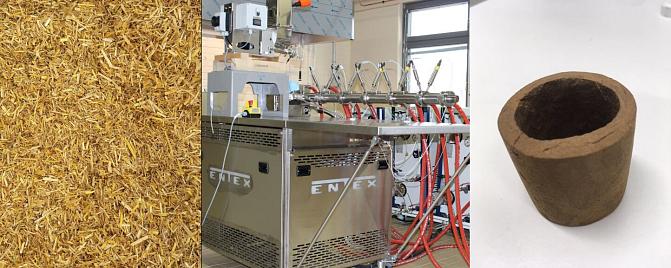
Reactive biomass for producing bioproducts
On this page
Challenge
Plant-derived biomass is a renewable resource that provides an alternative for fossil carbon and related compounds and for a variety of products. Lignocellulosic biomass is a valuable resource for a wide array of applications ranging from biocomposites to biofertilizers. However, current solutions for utilizing side streams like oat husk and oat straw are still multi-step processes and pretreatments are needed. Many of the current solutions benefits only from a specific component of lignocelluloce e.g. celluloce. The separation of the specific component consumes a lot of natural resources and may use dangerous chemicals.
Solution
Natural Resources Institute Luke has developed a novel method, which produces reactive biomass by using multi-screw extruder. This reactive biomass can be used to produce for example recyclable and biodegrable biocomposite, packaging materials, and items and glues for many other applications.
The present method uses a multipurpose technology, multi-screw extrusion, which converts carbohydrate compounds of plants into reactive mass, which will react for example in an amine reaction of urea. The efficiency of the multi-screw extruder is empowered by a plasticiser, carboxymethylcelluloce (CMC), which also takes part in the reactions of the reactive biomass and fortifies the ready products.
Benefits
The raw material is whole biomass like straw, hay, leaves, husks and other side products from grain processing facilities such as dryers and mills. No fractionation due to the production of reactive biomass is required, but the process can benefit from side fractions of other processes. The raw materials are only ground. All the main unit operations and reactions are done in one multiscrew extruder. No dangerous chemicals are used.
IPR Status
Patent application, METHOD FOR PRODUCING REACTIVE BIOMASS AND PRODUCTS THEREOF, filed in Finland 6/2022 and corresponding PCT application was filed in 2023.
Luke is looking for industrial partners for further development, scaling up and piloting the method.


